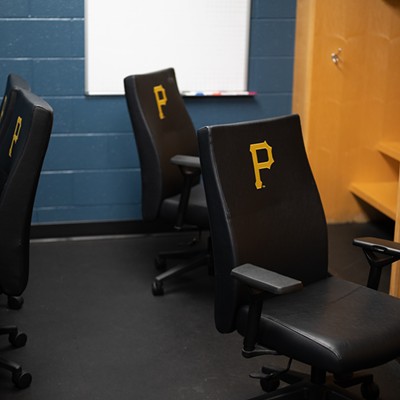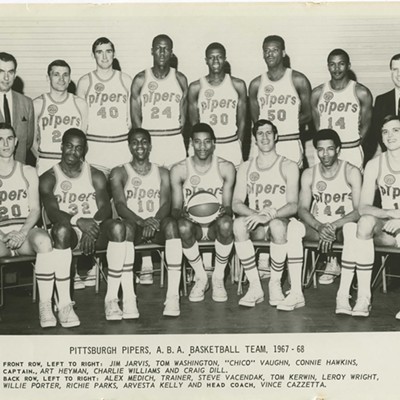In more than 1.5 million rounds of golf in PGA history, only one person has ever shot a 58. That person was Jim Furyk, who shot that score and made golf history at the recent Travelers Championship. It was the best round of golf ever. And to think, he learned the game at the Uniontown Country Club in Fayette County, where his dad was the pro for many years.
But that’s not the county’s only brush with the sports world. Former Pirates and Phillies pitcher Terry Muhlholland practiced his renowned pick-off move as a student at Laurel Highlands High School. Mulholland cashed a check in the majors for 20 years and even threw a no-hitter. He racked up 124 wins while changing uniforms 13 times. And let’s not forget football. Chuck Muncie, a three-time NFL Pro Bowler with the Saints and Chargers, was also a native of Fayette County.
Despite these successful native sons, the county has an inferiority complex and a lot of troubles. It’s referred to on occasion as “Fayette-nam” because of its crime and drug problem. If the county is on the news, it’s usually for a drug bust, an altercation at a Walmart or a bomb scare at a Walmart. Still, the county is not without its positives. It has Ohiopyle State Park, Frank Lloyd Wright’s Fallingwater, and Nemacolin Resort, all nestled within its confines. It’s also the birthplace of the Big Mac, and that alone should command respect. But its proudest export is George C. Marshall. Besides winning the Nobel Peace Prize and being named Secretary of Defense, president of the American Red Cross, Secretary of State and a general of the U.S. Army, Marshall really didn’t do much.
As for other contributions to the sports world:
Ernie Davis, also known as the “Elmira Express,” called Fayette County home until age 12, which tragically was half his life. Davis became the first African American to win the Heisman Trophy. The Syracuse running back also won an NCAA title with his team as a sophomore, and took home the award for best college football player in the nation as a senior, in 1961. Davis never played in the pros; he was drafted by Washington in 1962 but, surprisingly, the owner of that team was a legendary racist. His name was George Preston Marshall (different than the George Marshall above), and he refused to draft anyone who wasn’t lily-white even years after the league had been desegregated. He drafted Davis only after being threatened with the loss of a stadium lease. Davis then refused to play for the bigot and was traded to the Cleveland Browns — making him the last player to be happy about a trade to Cleveland. Sadly, Davis would never play a down in the NFL. He was diagnosed with leukemia and died in 1963. His life is highlighted in the 2008 film The Express.
Johnny Lujack is another Heisman winner. Connellsville’s Lujack started the trend of Western Pennsylvania quarterbacks going to the NFL. He went from Notre Dame to the Chicago Bears. Lujack played only four years, but was a three-time All-Pro and led the league in passing yards and passing touchdowns in 1949. Today, at 91, he’s the oldest living Heisman winner.
C. Vivian Stringer, the current head coach of the Rutgers women’s basketball team, has won nearly 1,000 games in her coaching career. The Slippery Rock grad is in the Women’s Basketball Hall of Fame and the Naismith Memorial Basketball Hall of Fame. She was inducted into the latter in 2009 along with Michael Jordan. Stringer also has an Olympic gold medal that she earned as an assistant coach at the 2004 Athens games. She is also the only coach in women’s basketball history to lead three teams to the NCAA Final Four — Cheyney State, Iowa and Rutgers. In fact, in all of women’s college basketball, only three coaches have won more games.
Runner John Woodruff, a freshman at Pitt in 1936, won the gold medal in Berlin right in front of You Know Who. Another Connellsville native, he struck gold in the 800-meter run. Connellsville still pays tribute to its late champion with an annual 5K road race in his honor.
So a county of about 130,000 people has given a lot to sports and history. Pick any random county in any state with a similar population and I bet you won’t find a Nobel Peace Prize, the greatest example of single-home architecture, two Heisman trophies, a no-hitter, a golf round of 58, a top-four college coach, a five-star resort, two gold medals, and the world’s most famous cheeseburger.



















